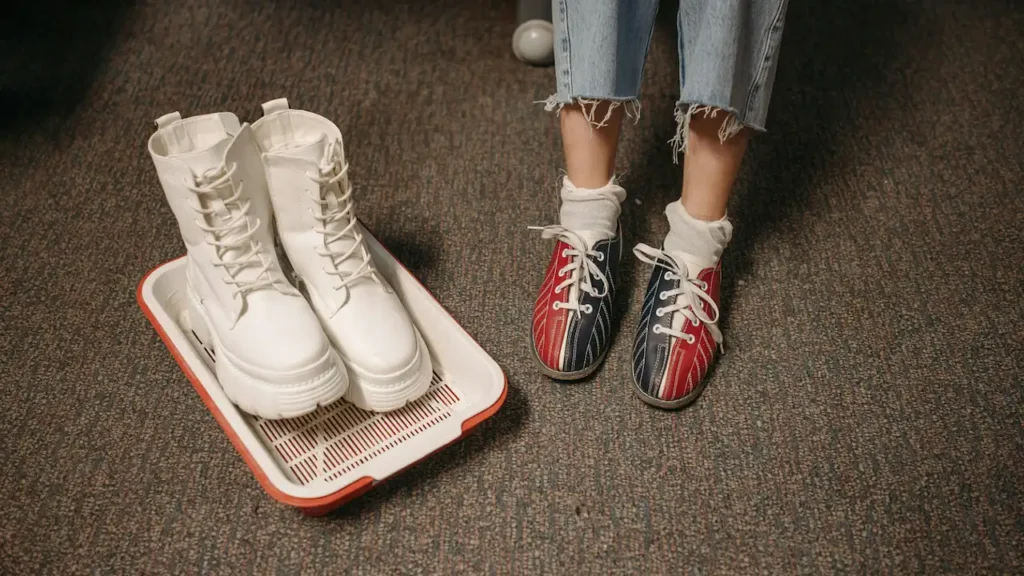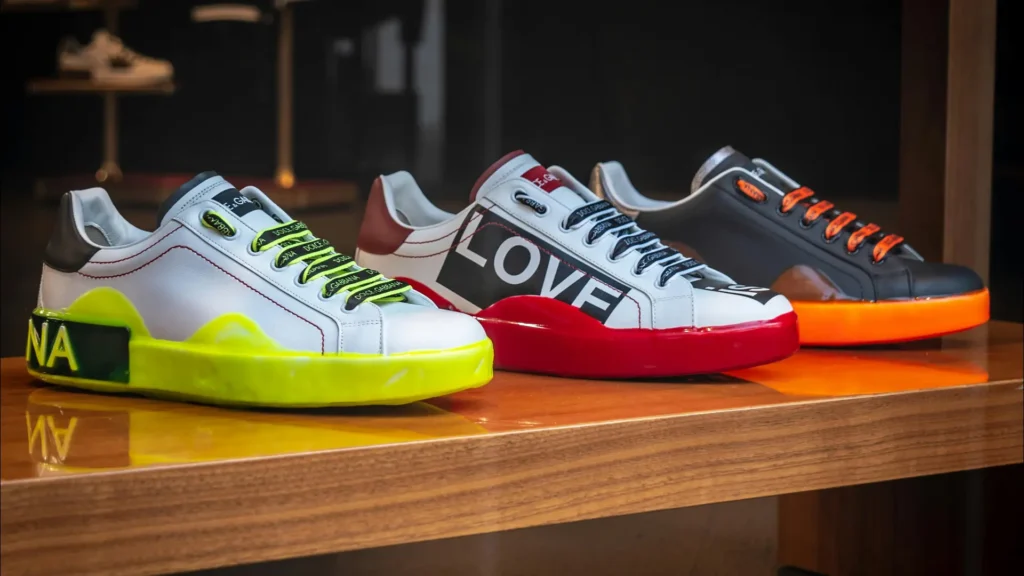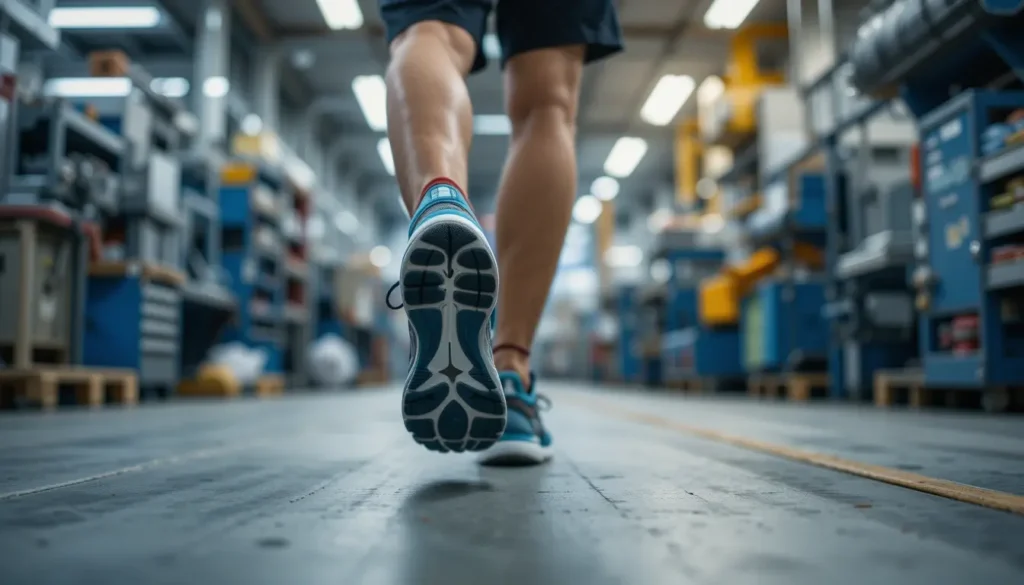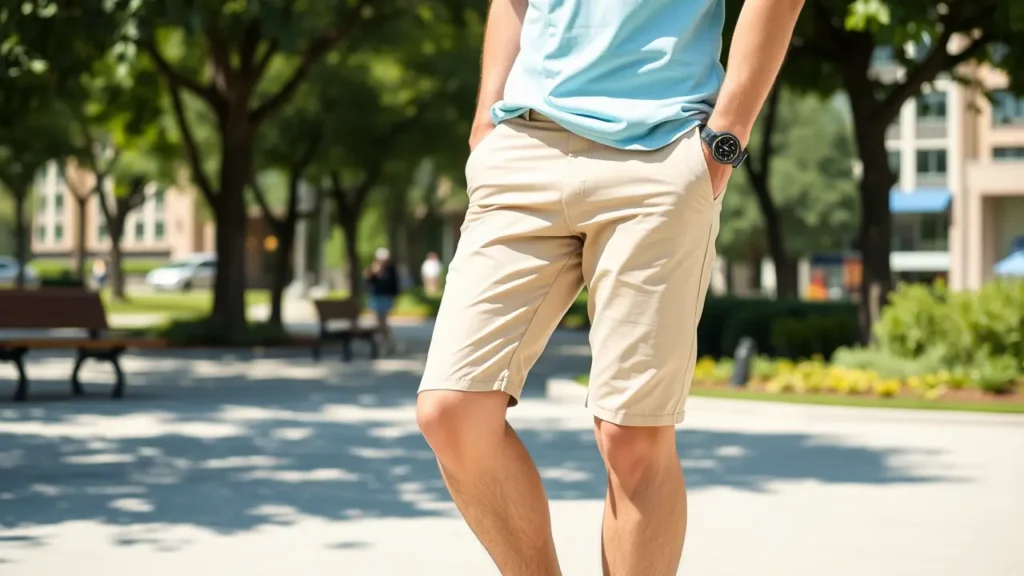A capsule shoe collection is the ultimate solution a streamlined footwear wardrobe. It is essential for adapting to the shifting demands of spring, summer, fall, and winter.
By curating a small set of high-quality shoes, you can cover every occasion and weather. This approach minimizes clutter, maximizes wearability, and ensures you’re always prepared.
Why a Capsule Shoe Collection?
The capsule concept, borrowed from minimalist fashion, emphasizes owning fewer items that serve multiple purposes.
Shoes are a perfect candidate for this philosophy. They’re both a practical necessity and a style statement. A well-designed capsule shoe collection saves time, reduces storage needs, and cuts down on the expense of replacing trendy, low-quality pairs.
Plus, it’s eco-friendly—fewer purchases mean less waste.
For all four seasons, the goal is a lean lineup. Whether you’re dodging puddles in April or braving icy sidewalks in January, your shoes should rise to the challenge.
The magic number—5 to 8 pairs—strikes a sweet spot between variety and simplicity.
Here’s an in-depth 5 step guide to crafting a capsule shoe collection that works year-round.
Step 1: Assess Your Lifestyle and Climate
A capsule shoe collection isn’t a generic template. Iit’s a personalized toolkit designed to fit your reality. Before you think about picking out shoes, pause to evaluate your daily life and the environment you live in. This foundational step is non-negotiable.
To get started, break it down into three key areas: your routine, your climate, and your personal style. Here’s how to dig in.
Routine: Consider how you spend your days. Are you pounding the pavement, walking long distances through urban jungles or suburban sprawl? Do you commute by car, hopping from parking lot to office with minimal exposure to the elements? Or maybe you’re mostly indoors?
Think about your activity level, too—are you on your feet constantly for work, chasing after kids, or kicking back for leisure? Your shoes need to match your pace.
Climate: Next, zoom out to your local weather patterns. What’s the seasonal breakdown where you live? Do you deal with snowy, subzero winters that demand insulation and traction, or are your cold months more about drizzle and mud?
Are summers scorching and dry, begging for airy sandals, or sticky and humid, requiring breathable sturdy options?
How drastic are the shifts between seasons? Do you get distinct spring blooms and fall chills, or is it a blur of mild, wet days year-round?
Style: Finally, reflect on your aesthetic. Shoes are an extension of who you are.
Do you gravitate toward sleek, modern vibes with clean lines and neutral tones? Are you more rugged and outdoorsy, favoring earthy colors and tough textures?
Your capsule should feel authentic to you. There’s no point in curating a lineup you won’t love wearing.
Your answers to these questions create a blueprint for your collection. They highlight your priorities and reveal gaps to fill. Here’s how it plays out in practice:
If you’re navigating busy streets, you might favor chic, walkable flats, low-profile sneakers. Bulky hikers could feel out of place.
Love hiking, camping, or gardening? You’ll likely need waterproof trail shoes, and insulated boots.
In milder zones (think coastal California or the Pacific Northwest), you might skip heavy snow gear for lighter, water-resistant duck boots.
If you bounce between office gigs and gym sessions, your list might blend dress shoes, athletic pairs, and all-weather staples.
Step 2: The Core Collection
Here’s a detailed rundown of the essential shoe types for a four-season capsule. These picks form a versatile backbone.
White Leather Sneakers (Spring/Summer/Fall)
White leather sneakers are endlessly adaptable. They pair with jeans, skirts, shorts. They offer a casual vibe with a touch of sophistication. Leather outperforms canvas in drizzle, extending their use into fall. Look for a minimalist design. Consider wearing Adidas Stan Smiths, Common Projects, or Veja Esplar.
Neutral Ankle Boots (Fall/Winter)
Ankle boots in a neutral shade are a cold-weather essential. They’re rugged enough for slushy streets and polished for office wear. Choose leather with a low block heel. Chelsea boots offer durability and flair.
Waterproof Rain Boots or Duck Boots (Winter/Fall)
Wet weather demands a dedicated pair. Short rubber rain boots handle puddles and downpours, while duck boots add warmth and style for snow. Stick to navy, olive, or black to keep them wearable beyond storms.
Breathable Sandals (Summer/Spring)
For hot months, sandals are non-negotiable. Opt for strappy leather designs in a neutral tone. Tan, black, or beige go from beach to barbecue to dinner out. Avoid flimsy flip-flops; instead, choose sandals with arch support and a slight heel.
Classic Loafers (Spring/Fall)
A pair of loafers bridges the gap between casual and dressy. Pick a versatile color—black, navy, camel—and leather or suede for longevity. They’re ideal for office days.
Athletic Shoes (All Seasons)
If you exercise—an athletic pair is a must. Go for a sleek, neutral design from Nike, Hoka, or On Running. Prioritize cushioning, breathability, and support over fleeting trends. These double as casual shoes for long days on your feet.
Dress Shoes (All Seasons)
Formal occasions call for a dedicated pair. Women might choose nude pumps with a mid-height heel, while men can opt for polished leather oxfords. These should be elegant, fitting everything from weddings to interviews.
Step 3: Prioritize Quality Over Quantity

The strength of capsule shoe collection comes down to longevity. The whole point of this approach is to own fewer pairs that do more. Invest in shoes built to endure is non-negotiable.
Shift your mindset: quality trumps quantity every time. By spending a bit more upfront on well-crafted shoes, you’re buying durability, comfort, and peace of mind. Here’s how to ensure your collection stands the test of time.
Materials: The raw stuff your shoes are made of sets the foundation. Opt for full-grain leather or suede for a softer alternative. These natural materials outlast cheap synthetics, which crack and fade. Seek high-quality recycled polyester blends or plant-based leathers, but skip the thin, shiny faux stuff that screams disposable. Look at linings, too. Quality materials don’t just survive. They get better with wear.
Construction: How a shoe is put together matters as much as what it’s made of. Check the soles. Goodyear welted is a gold standard for durability. This allows resoling down the line instead of tossing the pair.
Avoid glued soles. They’re fine for a season, but they’ll split under stress. Examine the details. Sturdy stitching should be even and tight, not loose or fraying.
Zippers, buckles, and eyelets should feel solid. Metal beats plastic. Laces should be thick and waxed, not thin strings that snap. A well-built shoe isn’t just a purchase; it’s an investment.
Comfort: No matter how tough a shoe is, it’s useless if it hurts to wear. Test for proper fit right out of the box. Your toes should have wiggle room, your heel should stay put, and the arch should feel supported.
Cushioning is key, especially for all-day wear. Look for padded insoles and shock-absorbing midsoles. Avoid flat, paper-thin bases.
Don’t buy into the “they’ll stretch” myth. Shoes should feel good from day one, not after a month of blisters.
Try them on late in the day when your feet are slightly swollen to mimic real-world conditions. Comfort and quality go hand in hand. A shoe that fits your foot’s quirks will last because you’ll actually wear it.
Brands: You don’t need to break the bank. Certain names deliver bang for your buck. Clarks nails timeless styles with solid craftsmanship.
Blundstone’s Chelsea boots are rugged yet refined. They are built for years of stomping.
Red Wing offers heritage-grade leather and resoleable soles for the long haul.
Everlane keeps it sleek and sustainable without skimping on quality.
If new prices sting, hit thrift stores, consignment shops, or Poshmark, The RealReal, or eBay. Vintage or lightly used premium pairs cost less than fast-fashion junk. Research reviews, too; a brand’s reputation can steer you clear of overhyped duds.
Cost vs. Value: Spending more upfront isn’t about flexing—it’s about math. A $50 pair that lasts six months costs you $100 a year. A $150 pair that lasts three years drops to $50 annually.
Factor in repairability: a quality shoe can be resoled, polished, and re-stitched. Cheap shoes? Straight to the landfill. Plus, high-quality pairs hold up under seasonal wear without falling apart. It’s not just money you’re saving; it’s time, energy, and the frustration.
Step 4: Care and Maintenance
A capsule shoe collection is a living system. It only thrives if you nurture it. Quality shoes are an investment. They need care for longevity. Neglect them, and you’re back to square one with worn-out soles.
The secret? Consistent maintenance and smart habits. By rotating your shoes to avoid overuse and tailoring your care to the seasons, you’ll keep your collection looking sharp and functioning flawlessly for years. Here’s a deeper dive into how to protect your footwear.
Rotate to Rest: First rule: don’t wear the same pair every day. Overuse wears down materials fast—soles grind down, leather creases, and moisture builds up from sweat. Give each pair at least a day off to breathe and recover. This isn’t just about longevity; it keeps them fresher and comfortable.
Spring/Summer Care: Warm months bring sweat, dust, and sudden showers. Focus on keeping shoes clean and dry. For sneakers and sandals, wipe them down after sweaty days with a damp cloth and mild soap. Don’t let grime bake in. Salt from perspiration can stain leather. After cleaning, stuff them with cedar shoe trees to absorb moisture and maintain their shape.
For sandals, hit the straps and footbeds; for sneakers, don’t skip the tongue or laces. Store them in a cool place. Don’t put them in a sealed plastic bin where heat and humidity breed mildew.
Fall/Winter Care: Wet seasons are brutal—mud, salt, and snow test the shoes. For leather boots, polish them every few weeks with a quality cream. It’s a shield against cracking. If they get wet, dry them naturally at room temperature.
Stuff with paper or shoe trees to soak up water from the inside. Scrub off mud with a soft brush and warm water, and tackle road salt with a vinegar-water mix (1:3 ratio) to neutralize it—salt eats leather otherwise.
Reapply waterproofing spray monthly to keep rain and slush at bay. Test it first on a small spot. For suede, brush off snow and dirt gently. Wet suede needs patience to dry before brushing.
All Seasons: Some habits span the year. For suede shoes, use a soft-bristled brush to lift dirt and revive the nap. Keep a cleaning kit handy: leather balm for hydration, sneaker wipes for quick touch-ups, a small brush for stubborn spots, and a waterproofing spray for emergencies.
Stock a mini repair stash, too. Shoe glue, replacement laces, and heel taps can fix loose soles or worn tips before they escalate. Check insoles monthly. If they’re flattening, swap them for new ones. After every wear, knock off loose dirt and give a quick once-over.
Proactive Fixes: Don’t wait for disaster. A cobbler can resole quality shoes, stitch uppers, and replace zippers. This is cheaper than new pairs and they are eco-friendly, too.
Catch problems early. A wobbly heel, a thinning sole, a fraying seam. Most fixes cost $10-30 versus $100+ for replacements. For high-wear pairs, schedule a cobbler visit annually to keep them in fighting shape.
Storage Smarts: When shoes aren’t in rotation, store them right. Use breathable shoe bags to avoid trapping moisture. Keep them in a dry spot. If space is tight, under-bed bins work, but add silica packets to fight humidity. For boots, clip them upright with boot shapers so they don’t flop and crease. Label off-season pairs to swap them in and out effortlessly.
Step 5: Resist the Urge to Overbuy
The beauty of a capsule shoe collection lies in its simplicity—owning just enough to cover your needs without excess. But the biggest threat to this streamlined system? Impulse purchases.
Overbuying undermines the whole point of a capsule. To keep your collection effective, you’ve got to master the art of saying no. Here’s how to resist the urge and protect your capsule from creeping chaos.
Pause and Evaluate: Before you swipe your card, hit the brakes. Every new pair should earn its spot, not just sneak in on a whim. Train yourself to step back. Retailers thrive on urgency, but your capsule thrives on thoughtfulness. A quick dopamine hit from buying isn’t worth a shoe that sits unused. Give yourself space to think it through. If you’re still obsessing tomorrow, it’s worth a closer look.
Beware the Trend Trap: Fashion loves a fleeting obsession. Platform clogs one year, pointy-toe mules the next. But trends fade fast, and a capsule endures. That pair of chunky neon sneakers might feel fresh now, but will you love them in 18 months when the hype’s gone? Stick to timeless silhouettes that sidestep the trend cycle.
Audit Your Current Collection: Sometimes the urge to buy stems from forgetting what you own. Every few months, pull out your pairs and take stock. Are they all pulling their weight? Spot a gap. But if you’re tripping over unused extras— it’s a red flag you’re veering off course. Purge what doesn’t serve you, and let it remind you: more isn’t better.
Combat Emotional Buying: Shoes can be a mood-lifter. But a capsule isn’t about feelings; it’s about function. If you’re tempted after a bad day, redirect that energy. Clean your current pairs, rearrange your shoe rack, and style them with a new outfit. The satisfaction of maximizing what you have outlasts the buzz of a new box. If the itch persists, set a rule: one in, one out.
The Long Game: A solid capsule isn’t flashy. It’s a quiet workhorse. Those 5-8 pairs, chosen with care, outlast a dozen trendy impulse buys in both style and substance. Instead of a graveyard of half-worn shoes, you’ve got a tight crew that’s weathered years.
A capsule shoe collection for all four seasons is about intentionality. With 5-8 pairs, you can tackle any weather, event, and mood while keeping your closet lean and your style sharp. Start with the essentials, refine based on your life, and commit to quality and care.




